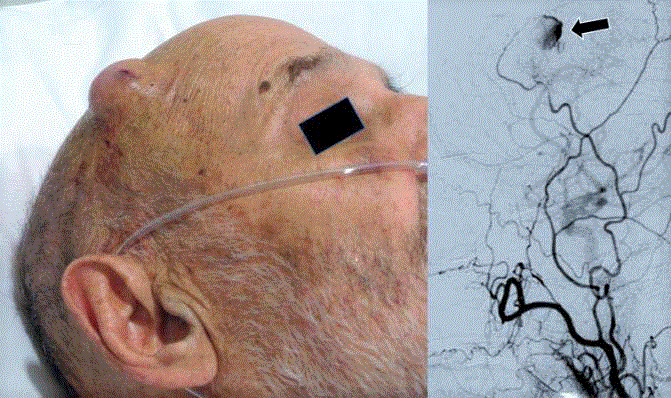Clinical Image
Superficial Temporal Artery Aneurysm
Jesús Vaquero*, Gregorio Rodríguez-Boto, Raquel Gutiérrez, Cecilia Fernández, Anwar Saab,
Rasha Hassan and Celia Ortega
Department of Neurosurgery, Hospital Puerta de Hierro-Majadahonda, Autonomous University, Madrid, Spain
*Corresponding author: Jesús Vaquero, Department of Neurosurgery, Hospital Puerta de Hierro-Majadahonda, Manuel de Falla, 1. 28222-Majadahonda, Madrid, Spain
Published: 29 Aug, 2017
Cite this article as: Vaquero J, Rodríguez-Boto G,
Gutiérrez R, Fernández C, Saab A,
Hassan R, et al. Superficial Temporal
Artery Aneurysm. Clin Surg. 2017; 2:
1606.
Clinical Image
A 82-year-old patient developed an epicranial pulsatile, soft and not painful mass, one month after blunt epicranial trauma. Pressing over temporal region this mass reduced size and disappeared pulsation. Angiogram showed a traumatic aneurysm of the superficial temporal artery, which was ligated and excised.
Discussion
This rare lesion account from 0.5% to 2.5% of all reported aneurysms. Most of them are caused by blunt trauma on the frontotemporal region, and should be suspected in patients with a history of scalp trauma, with subsequent development of a pulsatile mass over the course of the superficial temporal artery.

